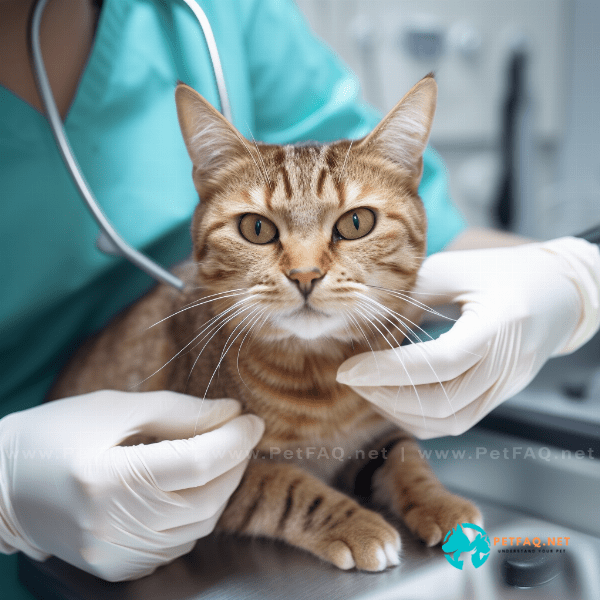Table of Contents
- The Importance of Feline Dental Health
- Common Dental Problems in Cats
- When Cat Teeth Removal Is Necessary
- Preparing Your Cat for Teeth Removal Surgery
- The Teeth Removal Procedure: What to Expect
- Aftercare for Your Cat’s Dental Health
- Preventing Future Dental Issues in Your Cat
- Alternatives to Cat Teeth Removal
- Risks and Complications of Cat Teeth Removal
- Finding a Qualified Veterinarian for Cat Teeth Removal
The Importance of Feline Dental Health
As pet owners, we often prioritize the physical well-being of our feline companions. However, we sometimes forget that dental health is just as important. Neglecting your cat’s dental hygiene can lead to a host of serious health problems, including infections, pain, and even tooth loss that may require Cat teeth removal.
Benefits of Good Dental Health for Cats
Maintaining good dental hygiene in cats has numerous benefits. Firstly, it helps to prevent bad breath, which is often caused by the buildup of bacteria in the mouth. Secondly, it reduces the likelihood of dental problems such as gingivitis, periodontal disease, and tooth decay. This, in turn, can help prevent the need for cat teeth removal, which is an invasive and uncomfortable procedure for cats.
Causes of Poor Feline Dental Health
Poor dental hygiene in cats can be caused by a variety of factors, including genetics, diet, and lack of proper dental care. Feeding your cat a diet that is high in carbohydrates or lacking in essential nutrients can contribute to dental problems. Additionally, failure to brush your cat’s teeth regularly or have their teeth professionally cleaned by a veterinarian can lead to tartar buildup and other dental issues.
Signs of Dental Problems in Cats
It is important to be aware of the signs of dental problems in cats so that you can take action before they worsen. Some common signs include bad breath, drooling, difficulty eating or drinking, swollen or bleeding gums, and loose or missing teeth. If you notice any of these symptoms, it is important to take your cat to the vet for a dental exam. In some cases, cat teeth removal may be necessary to alleviate pain or prevent further complications.
In summary, good dental health is crucial for your cat’s overall well-being. By taking proactive measures to maintain your cat’s dental hygiene, you can help prevent the need for cat teeth removal and ensure a happy, healthy life for your furry friend.
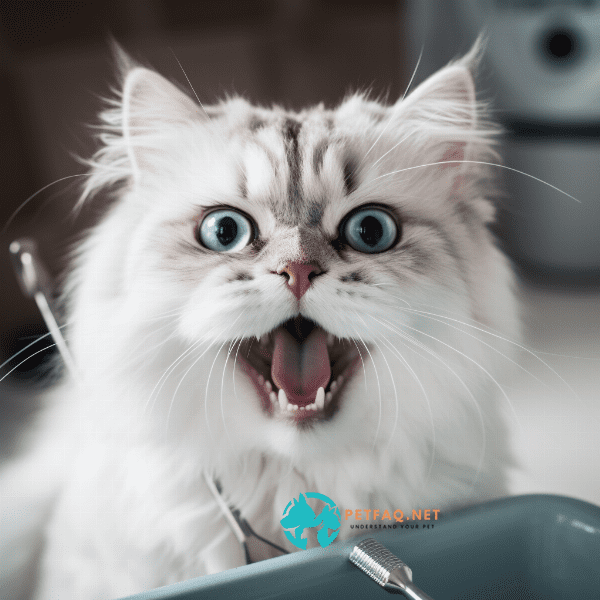
Common Dental Problems in Cats
Just like humans, cats can suffer from a range of dental problems that can impact their overall health and well-being. Here are some of the most common dental problems seen in cats, which may eventually require cat teeth removal.
Gingivitis
Gingivitis is a common dental problem in cats that occurs when the gums become inflamed. This is often caused by a buildup of bacteria in the mouth, which can be exacerbated by poor dental hygiene. Symptoms of gingivitis in cats include red, swollen gums, bad breath, and bleeding when the gums are touched. If left untreated, gingivitis can progress to periodontal disease, which may require cat teeth removal.
Tooth Resorption
Tooth resorption is a common dental problem in cats, where the tooth structure is gradually broken down and absorbed by the body. This can be extremely painful for cats and can lead to tooth loss if left untreated. Symptoms of tooth resorption in cats include excessive drooling, difficulty eating or chewing, and sensitivity to touch around the mouth. In some cases, cat teeth removal may be the only treatment option.
In conclusion, dental problems are a serious issue for cats that can impact their quality of life. Regular dental check-ups and cleanings, as well as proactive dental care at home, can help prevent the need for cat teeth removal and other invasive procedures. If you notice any signs of dental problems in your cat, it is important to consult with a veterinarian for proper diagnosis and treatment.
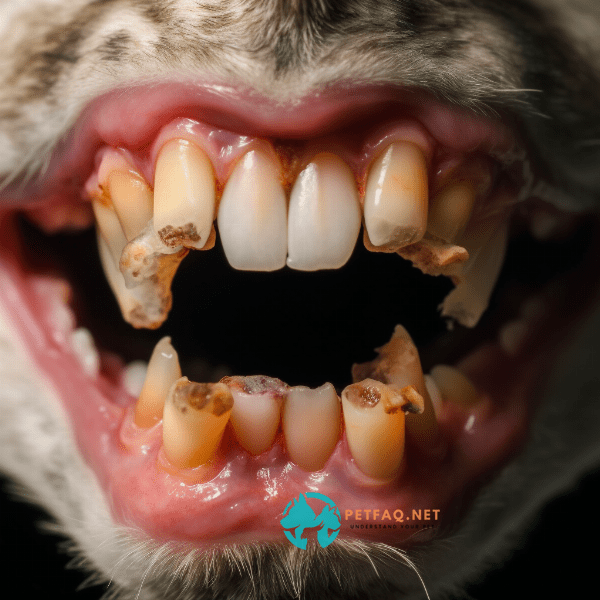
When Cat Teeth Removal Is Necessary
Cat teeth removal is a serious procedure that should only be considered when other treatments have failed or if there is no other viable option. Here are some of the situations where cat teeth removal may be necessary:
Severe Dental Decay
Severe dental decay can cause significant pain and discomfort for cats, and it may eventually lead to the loss of one or more teeth. In cases where the decay has progressed to the point where the tooth cannot be saved, cat teeth removal may be the only option to alleviate the pain and prevent further damage.
Periodontal Disease
Periodontal disease is a common reason for cat teeth removal. If the disease has progressed to the point where the supporting tissues and bone have been destroyed, the affected teeth may need to be extracted to prevent further damage and alleviate pain.
Trauma or Injury
If a cat has suffered trauma or injury to the mouth or jaw, it may require cat teeth removal as a last resort. This could include fractures or dislocations of the jaw or teeth, which may require removal to prevent further damage and promote healing.
In conclusion, cat teeth removal should only be considered in situations where it is necessary to alleviate pain or prevent further damage. It is important to work with a qualified veterinarian to determine the best course of action for your cat’s specific needs. With proper dental care and regular check-ups, the need for cat teeth removal can often be avoided.
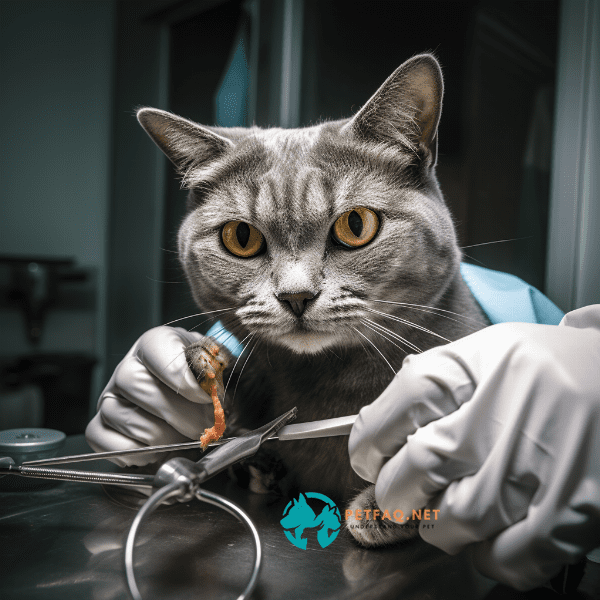
Preparing Your Cat for Teeth Removal Surgery
If your cat requires teeth removal surgery, it is important to prepare them properly beforehand to ensure a safe and successful procedure. Here are some steps to take to prepare your cat for cat teeth removal surgery:
Consult with Your Veterinarian
Before the procedure, it is important to schedule a consultation with your veterinarian to discuss the surgery and any potential risks. Your veterinarian will also provide you with instructions on how to prepare your cat for the surgery, including any dietary restrictions or medications that may need to be administered beforehand.
Fast Your Cat
Your cat will need to fast for a period of time before the surgery, typically around 12 hours. This is to ensure that their stomach is empty and reduce the risk of complications during the anesthesia. Make sure to follow your veterinarian’s instructions regarding fasting and any necessary medications that your cat may require before the surgery.
Provide Comfort and Support
The day of the surgery can be stressful for both you and your cat. Provide your cat with a comfortable and quiet space to rest and recover, and make sure to offer plenty of love and reassurance. Keep in mind that your cat may experience some discomfort after the surgery, so be prepared to offer pain medication as prescribed by your veterinarian.
In conclusion, preparing your cat for cat teeth removal surgery is an important part of ensuring a successful procedure and a safe recovery. By following your veterinarian’s instructions and providing your cat with the necessary care and support, you can help minimize the risks and ensure a smooth recovery process.
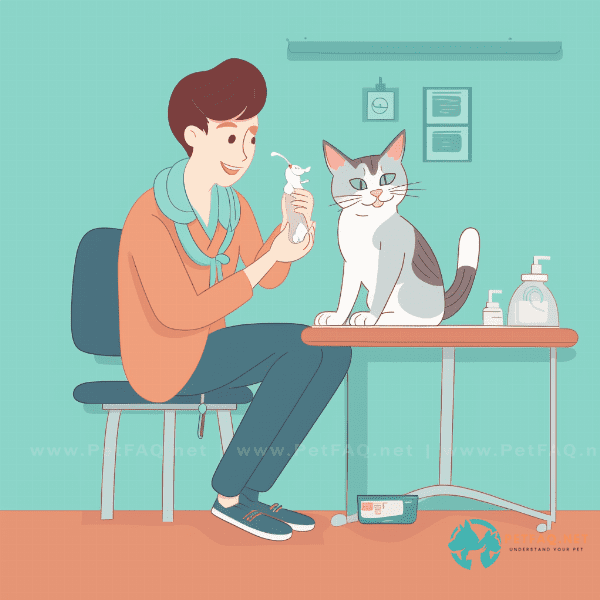
The Teeth Removal Procedure: What to Expect
Cat teeth removal is a common procedure that is typically performed under general anesthesia. Here is what you can expect during the teeth removal procedure:
Anesthesia
Before the procedure, your cat will be given general anesthesia to ensure that they are asleep and pain-free during the procedure. Your veterinarian will monitor your cat’s vital signs throughout the procedure to ensure their safety.
Tooth Extraction
Once your cat is under anesthesia, your veterinarian will begin the tooth extraction procedure. This may involve removing one or more teeth, depending on the extent of the dental problem. Your veterinarian will use specialized tools to carefully remove the affected teeth, and will take steps to minimize bleeding and ensure a safe and successful procedure.
Recovery
After the procedure, your cat will need time to recover from the anesthesia. They may be groggy and disoriented for a few hours, and may experience some discomfort and swelling in the mouth. Your veterinarian will provide you with instructions on how to care for your cat during the recovery process, including any necessary pain medications or dietary restrictions.
In conclusion, cat teeth removal is a common procedure that is performed under general anesthesia to ensure your cat’s comfort and safety. While the procedure itself is relatively straightforward, it is important to follow your veterinarian’s instructions carefully during the recovery process to ensure a successful outcome. With proper care and support, your cat can recover quickly and return to their normal routine.
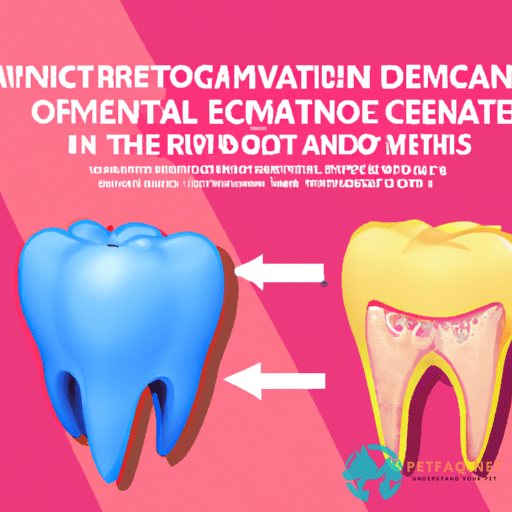
Aftercare for Your Cat’s Dental Health
After your cat has undergone cat teeth removal surgery, it is important to take steps to ensure their comfort and promote healing. Here are some tips for aftercare for your cat’s dental health:
Pain Management
Your cat may experience some discomfort after the procedure, and it is important to provide them with pain management as prescribed by your veterinarian. This may include medications or other treatments to alleviate pain and promote healing.
Soft Food Diet
After the procedure, your cat may have difficulty eating or drinking due to pain or swelling in the mouth. It is important to provide them with a soft food diet that is easy to chew and swallow. You may also need to provide your cat with water using a dropper or syringe if they are having difficulty drinking.
Oral Care
During the recovery process, it is important to maintain good oral hygiene for your cat. This may involve gently cleaning their teeth and gums with a soft cloth or toothbrush, or providing them with specialized dental treats or chews to promote dental health.
Follow-Up Appointments
After the procedure, your veterinarian will schedule follow-up appointments to monitor your cat’s progress and ensure that they are healing properly. It is important to attend these appointments and follow any additional instructions provided by your veterinarian to ensure a successful recovery.
In conclusion, proper aftercare for your cat’s dental health is crucial after cat teeth removal surgery. By following your veterinarian’s instructions carefully and providing your cat with the necessary care and support, you can help promote healing and ensure a healthy and happy future for your furry friend.
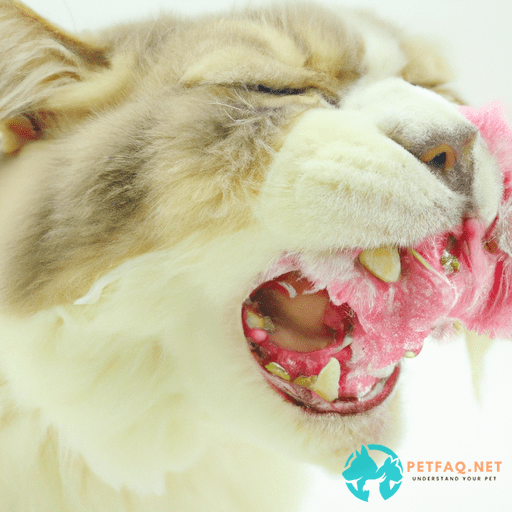
Preventing Future Dental Issues in Your Cat
Prevention is key when it comes to maintaining good dental health in cats. Here are some tips to help prevent future dental issues in your cat and avoid the need for cat teeth removal:
Regular Dental Cleanings
Regular dental cleanings are an important part of maintaining good dental health in cats. Your veterinarian can perform professional cleanings to remove tartar buildup and other dental issues that may lead to more serious problems down the line.
Healthy Diet
Feeding your cat a healthy and balanced diet can also help prevent dental issues. Avoid feeding your cat a diet that is high in carbohydrates or lacking in essential nutrients, as this can contribute to dental problems.
Regular Check-Ups
Regular check-ups with your veterinarian can help catch dental problems early on and prevent the need for more invasive procedures like cat teeth removal. Make sure to schedule regular appointments and bring up any concerns you may have about your cat’s dental health.
In conclusion, taking steps to prevent dental issues in your cat can help avoid the need for cat teeth removal and promote good overall health and well-being. By maintaining good dental hygiene at home, feeding your cat a healthy diet, and scheduling regular check-ups with your veterinarian, you can help ensure a happy and healthy life for your furry friend.
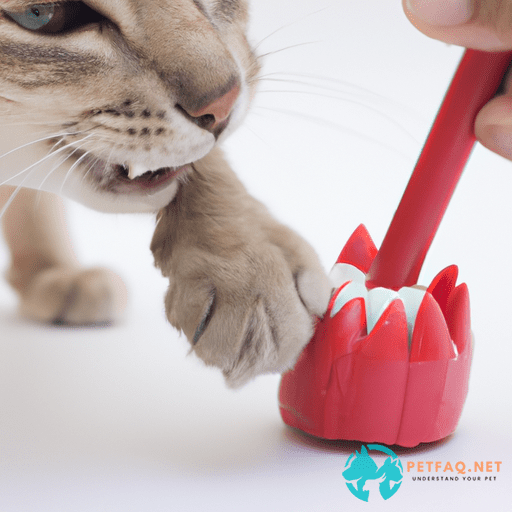
Alternatives to Cat Teeth Removal
While cat teeth removal may be necessary in some cases, there are also alternative treatments that may be considered. Here are some alternatives to cat teeth removal:
Professional Dental Cleanings
Professional dental cleanings can help prevent the need for cat teeth removal by removing tartar buildup and other dental issues before they progress to more serious problems. Regular cleanings can help maintain good dental health in cats and avoid the need for invasive procedures.
Root Canal Treatment
In some cases, a root canal may be a viable alternative to cat teeth removal. This involves removing the infected or damaged pulp from the tooth and replacing it with a filling material. While this is a more invasive procedure than a dental cleaning, it may be a viable option for saving a damaged tooth and avoiding the need for cat teeth removal.
Antibiotics and Pain Management
In some cases, antibiotics and pain management may be sufficient to treat a dental issue without the need for cat teeth removal. This may involve prescribing antibiotics to treat an infection or providing pain management to alleviate discomfort.
In conclusion, cat teeth removal is not always the only option when it comes to treating dental issues in cats. By considering alternative treatments such as professional dental cleanings, root canal treatment, and antibiotics and pain management, you can help maintain your cat’s dental health and avoid more invasive procedures. Consult with your veterinarian to determine the best course of action for your cat’s specific needs.
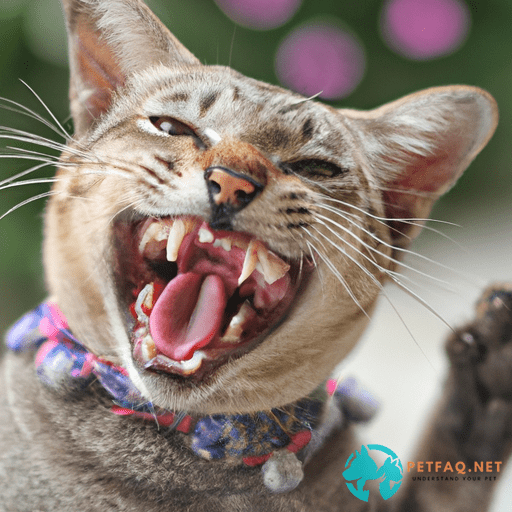
Risks and Complications of Cat Teeth Removal
While cat teeth removal is a common procedure, there are also risks and complications that can occur. Here are some potential risks and complications associated with cat teeth removal:
Anesthesia Risks
General anesthesia is required for cat teeth removal, which can carry certain risks, especially for older cats or those with pre-existing health conditions. These risks can include breathing difficulties, heart problems, and other complications.
Pain and Discomfort
After the procedure, your cat may experience some pain and discomfort. This can be managed with pain medications as prescribed by your veterinarian, but some cats may experience more severe discomfort or complications during the recovery process.
Infection
Infection can occur after cat teeth removal, especially if the affected area is not kept clean and dry. This can lead to further health problems and may require additional treatment.
Nerve Damage
In some cases, nerve damage can occur during the cat teeth removal procedure, which can cause numbness or other issues in the affected area. This can be a temporary or permanent complication, depending on the severity of the damage.
In conclusion, while cat teeth removal is generally a safe procedure, there are potential risks and complications that should be considered. It is important to work with a qualified veterinarian to minimize these risks and ensure a safe and successful procedure. If you have any concerns about the risks associated with cat teeth removal, make sure to discuss them with your veterinarian before proceeding with the procedure.
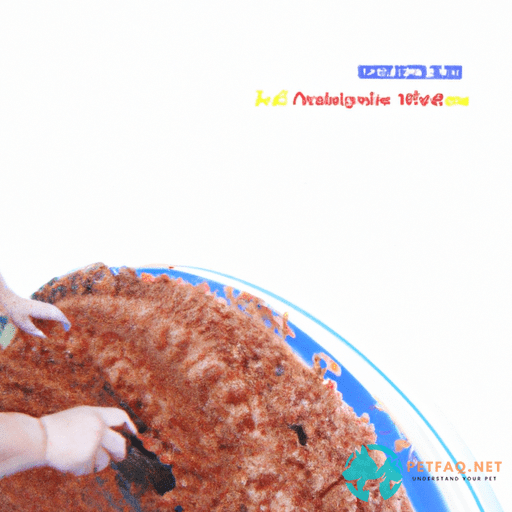
Finding a Qualified Veterinarian for Cat Teeth Removal
If your cat requires cat teeth removal, it is important to find a qualified and experienced veterinarian to perform the procedure. Here are some tips for finding a qualified veterinarian for cat teeth removal:
Ask for Referrals
Ask for referrals from friends, family, or other pet owners in your community. They may be able to recommend a veterinarian who has experience with cat teeth removal and can provide high-quality care for your cat.
Research Online
Do some research online to find veterinarians in your area who specialize in Cat dental care. Look for reviews and ratings from other pet owners, and make sure to read up on the veterinarian’s qualifications and experience.
Schedule a Consultation
Once you have identified a potential veterinarian, schedule a consultation to discuss the cat teeth removal procedure and any potential risks or complications. This is a good opportunity to ask questions and get a sense of the veterinarian’s expertise and bedside manner.
Check Credentials
Make sure to check the veterinarian’s credentials and verify that they are licensed and certified to perform cat teeth removal. You can also check with your state’s veterinary medical board to ensure that the veterinarian has a good standing and no disciplinary actions on record.
In conclusion, finding a qualified veterinarian for cat teeth removal is an important part of ensuring a safe and successful procedure for your furry friend. By asking for referrals, researching online, scheduling a consultation, and checking credentials, you can find a veterinarian who has the necessary expertise and experience to provide high-quality care for your cat.

Frequently Asked Questions (FAQs) about cat teeth removal:
1. How long does it take for a cat to recover from teeth removal surgery?2. Will a cat be able to eat normally after having its teeth removed?
3. Is it safe to remove a cat's teeth?
4. Is cat teeth removal painful for the cat?
5. Antibiotics: If your cat has a dental infection, antibiotics may be prescribed to help clear up the infection and reduce inflammation.



